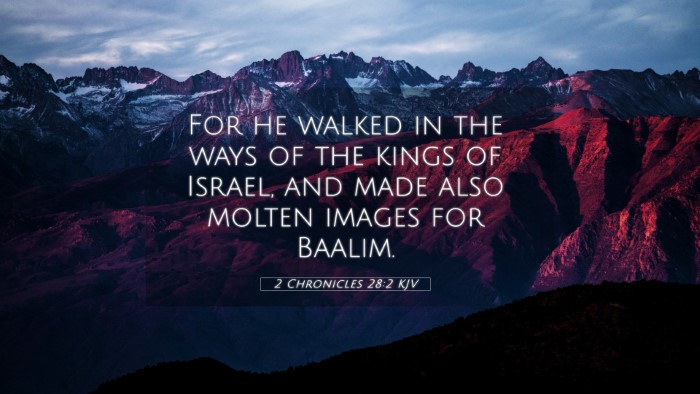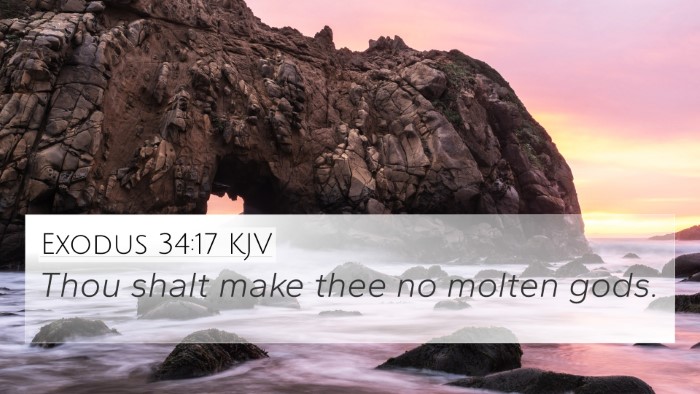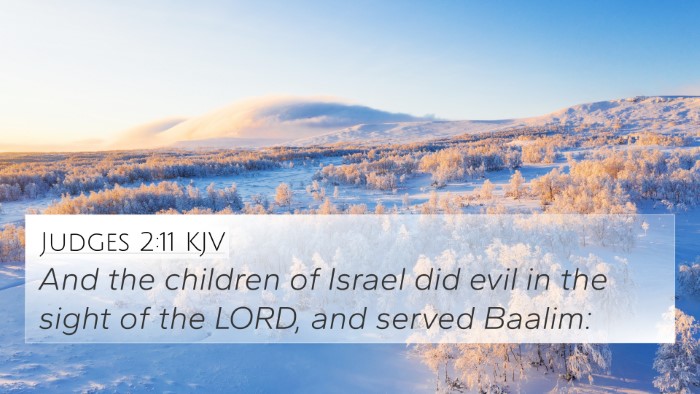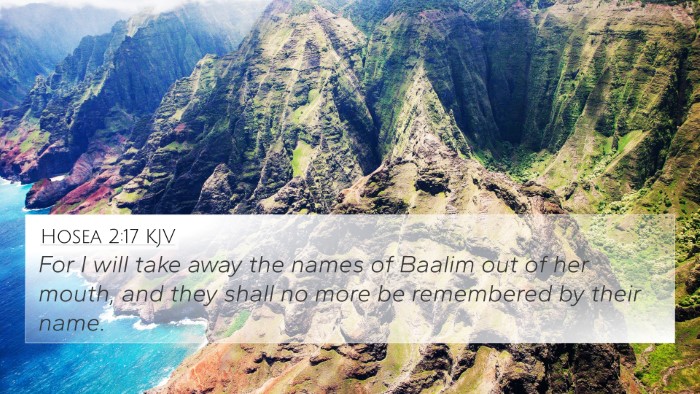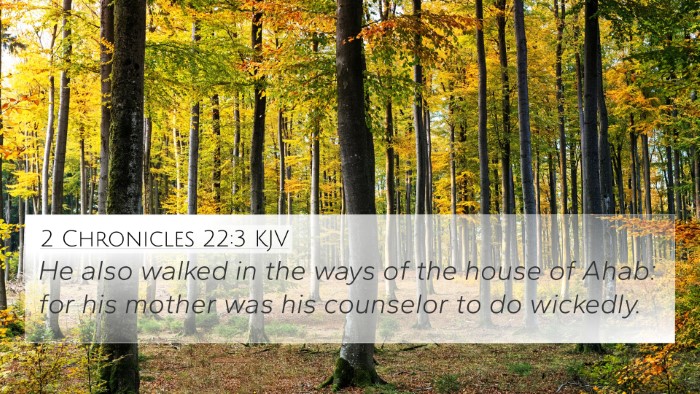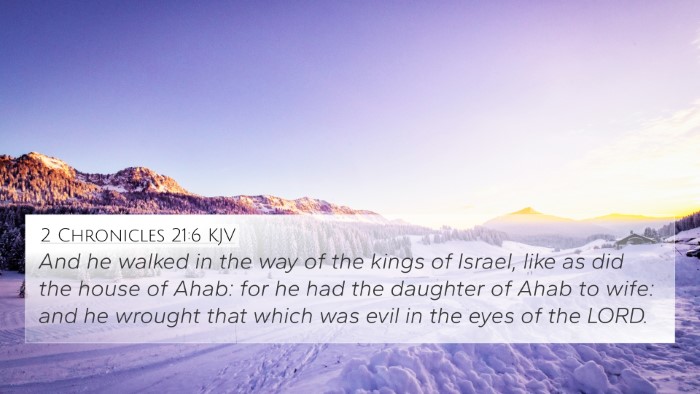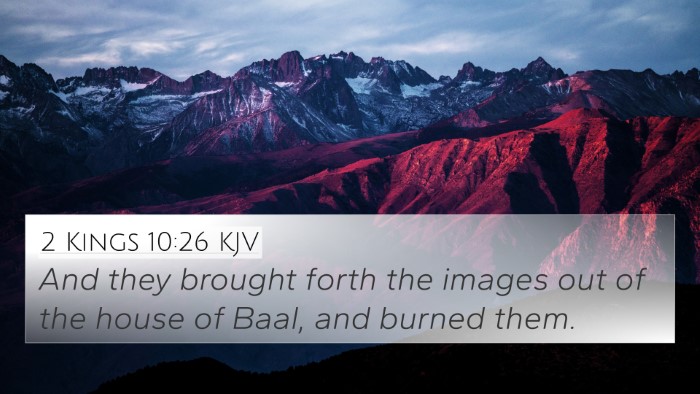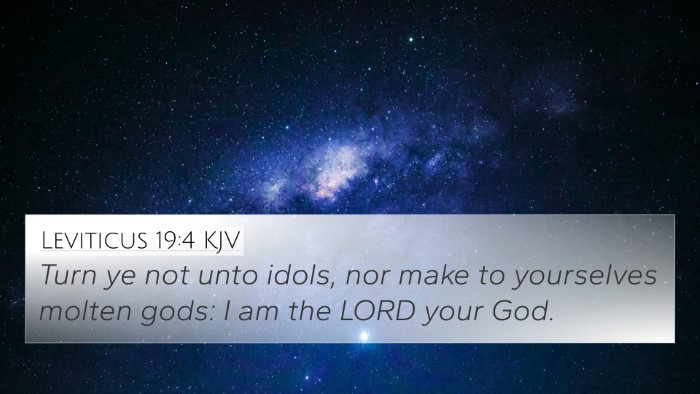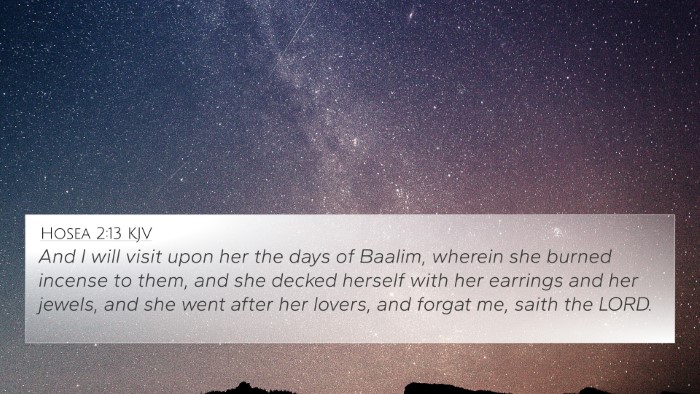Understanding 2 Chronicles 28:2
Bible Verse: 2 Chronicles 28:2 - "But he walked in the ways of the kings of Israel, and made also molten images for Baalim."
Summary of Biblical Context
In 2 Chronicles 28:2, we find a description of Ahaz, king of Judah, and his alignment with the idolatrous practices of the northern kingdom of Israel. This notable verse seeks to provide insight into the spiritual state of Judah during Ahaz's reign and his significant departure from the worship of Yahweh, as emphasized by various public domain commentaries.
Insights from Commentaries
-
Matthew Henry's Commentary:
Henry explains that King Ahaz not only followed the sinful practices of Israel but also initiated idolatrous worship by creating molten images for Baalim. This reflects his disregard for the commandments of God and serves as a warning against the influence of surrounding pagan cultures.
-
Albert Barnes' Notes:
Barnes highlights that Ahaz's actions represent a clear departure from the worship of God as prescribed in the law. He references the historical context, noting that this king's rule was marked by unfaithfulness and an inclination toward the corrupt practices of Israel rather than the established worship in Jerusalem.
-
Adam Clarke's Commentary:
Clarke points out that the mention of molten images indicates a serious offense against the divine commandment prohibiting graven images. He delves into the socio-political dynamics of the time, suggesting that Ahaz’s choices were influenced by the geopolitical pressures of the era, leading him to seek help through idolatry.
Cross-Referencing Related Scriptures
This verse connects with several others, enriching the study and understanding of idolatry in the Bible. Below are key cross-references:
- 2 Kings 16:3: Provides further details on Ahaz's practices, including human sacrifices.
- Isaiah 7:1-2: Discusses the political context during Ahaz's reign and his fears concerning invasion.
- Deuteronomy 27:15: Outlines the curse against idolatry, reinforcing the seriousness of Ahaz's actions.
- 2 Chronicles 28:3: Mentions Ahaz's even more malicious practices of sacrificing his own children.
- Micah 5:1: Prophecies during Ahaz's time, contrasting righteousness with the current apostasy.
- Jeremiah 32:35: Reflects God's condemnation of His people for engaging in idolatry.
- 1 Kings 14:9: Discusses the sins of Jeroboam, reinforcing the ongoing theme of idolatry in the northern kingdom.
Implications on Worship and Idolatry
The exploration of this verse offers valuable lessons on the perils of syncretism in worship. Ahaz represents a cautionary tale against adopting practices that contradict divine instruction. The commentaries collectively reinforce the notion that deviation from God's laws results in dire consequences for both individuals and nations.
Comparative Analysis with Other Biblical Texts
Through comparative analysis, we can observe thematic connections between 2 Chronicles 28:2 and other scriptures that address the dangers of idolatry. The verse serves as a fulcrum to illustrate how the choices of leaders impact their followers and the overarching spiritual health of a nation.
Conclusion
2 Chronicles 28:2 stands as both a historical account and a spiritual warning. Our understanding of this verse is deepened through cross-references and insights from esteemed commentaries, allowing us to see the broader implications of Ahaz's actions and their repercussions. This reinforces the importance of adhering to divine commandments and the sustainability of covenant faithfulness.
Further Research and Study Tools
- Using a Bible concordance can help identify further cross-references and deepen understanding.
- A Bible cross-reference guide is invaluable for connecting themes across scriptures.
- Engaging in cross-reference Bible study enhances the reader's grasp of the interconnectedness of biblical texts.
- Strategies on how to use Bible cross-references can facilitate more thorough understanding during personal scripture study.

